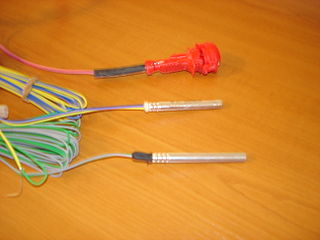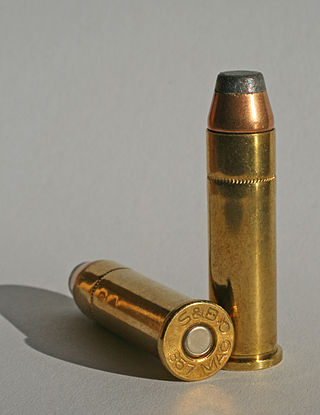Related Research Articles

RDX (abbreviation of "Research Department eXplosive") or hexogen, among other names, is an organic compound with the formula (O2N2CH2)3. It is white, odorless and tasteless, widely used as an explosive. Chemically, it is classified as a nitroamine alongside HMX, which is a more energetic explosive than TNT. It was used widely in World War II and remains common in military applications.

An explosive is a reactive substance that contains a great amount of potential energy that can produce an explosion if released suddenly, usually accompanied by the production of light, heat, sound, and pressure. An explosive charge is a measured quantity of explosive material, which may either be composed solely of one ingredient or be a mixture containing at least two substances.
Kerosene, or paraffin, is a combustible hydrocarbon liquid which is derived from petroleum. It is widely used as a fuel in aviation as well as households. Its name derives from Greek: κηρός (kērós) meaning "wax", and was registered as a trademark by Canadian geologist and inventor Abraham Gesner in 1854 before evolving into a generic trademark. It is sometimes spelled kerosine in scientific and industrial usage.

A detonator, sometimes called a blasting cap in the US, is a small sensitive device used to provoke a larger, more powerful but relatively insensitive secondary explosive of an explosive device used in commercial mining, excavation, demolition, etc.

A match is a tool for starting a fire. Typically, matches are made of small wooden sticks or stiff paper. One end is coated with a material that can be ignited by friction generated by striking the match against a suitable surface. Wooden matches are packaged in matchboxes, and paper matches are partially cut into rows and stapled into matchbooks. The coated end of a match, known as the match "head", consists of a bead of active ingredients and binder, often colored for easier inspection. There are two main types of matches: safety matches, which can be struck only against a specially prepared surface, and strike-anywhere matches, for which any suitably frictional surface can be used.

The percussion cap, percussion primer, or caplock, introduced in the early 1820s, is a type of single-use percussion ignition device for muzzle loader firearm locks enabling them to fire reliably in any weather condition. Its invention gave rise to the caplock mechanism or percussion lock system which used percussion caps struck by the hammer to set off the gunpowder charge in rifles and cap and ball firearms. Any firearm using a caplock mechanism is a percussion gun. Any long gun with a cap-lock mechanism and rifled barrel is a percussion rifle. Cap and ball describes cap-lock firearms discharging a single bore-diameter spherical bullet with each shot.

A kerosene lamp is a type of lighting device that uses kerosene as a fuel. Kerosene lamps have a wick or mantle as light source, protected by a glass chimney or globe; lamps may be used on a table, or hand-held lanterns may be used for portable lighting. Like oil lamps, they are useful for lighting without electricity, such as in regions without rural electrification, in electrified areas during power outages, at campsites, and on boats. There are three types of kerosene lamp: flat-wick, central-draft, and mantle lamp. Kerosene lanterns meant for portable use have a flat wick and are made in dead-flame, hot-blast, and cold-blast variants.
Cheddite is a class of explosive materials invented in 1897 by E. A. G. Street of the firm of Berges, Corbin et Cie and originally manufactured in the town of Chedde in Haute-Savoie, France in the early twentieth century.

Sodium hypochlorite, commonly known in a dilute solution as (chlorine) bleach, is an alkaline inorganic chemical compound with the formula NaOCl, consisting of a sodium cation and a hypochlorite anion. It may also be viewed as the sodium salt of hypochlorous acid. The anhydrous compound is unstable and may decompose explosively. It can be crystallized as a pentahydrate NaOCl·5H
2O, a pale greenish-yellow solid which is not explosive and is stable if kept refrigerated.

Potassium chlorate is a compound containing potassium, chlorine and oxygen, with the molecular formula KClO3. In its pure form, it is a white crystalline substance. After sodium chlorate, it is the second most common chlorate in industrial use. It is a strong oxidizing agent and its most important application is in safety matches. In other applications it is mostly obsolete and has been replaced by safer alternatives in recent decades. It has been used

A centerfire cartridge is a firearm metallic cartridge whose primer is located at the center of the base of its casing. Unlike rimfire cartridges, the centerfire primer is typically a separate component seated into a recessed cavity in the case head and is replaceable by reloading.
Sprengel explosives are a generic class of materials invented by Hermann Sprengel in the 1870s. They consist of stoichiometric mixtures of strong oxidisers and reactive fuels, mixed just prior to use in order to enhance safety. Either the oxidiser or the fuel, or both, should be a liquid to facilitate mixing, and intimate contact between the materials for a fast reaction rate.

Silver fulminate (AgCNO) is the highly explosive silver salt of fulminic acid.
Armstrong's mixture is a highly shock and friction sensitive primary explosive. Formulations vary, but one consists of 67% potassium chlorate, 27% red phosphorus, 3% sulfur, and 3% calcium carbonate. It is named for Sir William Armstrong, who invented it sometime prior to 1872 for use in explosive shells.

Ammonium chlorate is an inorganic compound with the formula NH4ClO3.

János Irinyi was a Hungarian chemist and inventor of the noiseless and non-explosive match. He achieved this by mixing the yellow phosphorus with lead dioxide instead of the potassium chlorate used previously.
Kinetite was an explosive material patented in 1884 by T. Petry and O. Fallenstein, It consisted of nitrobenzene thickened or gelatinised by the addition of some collodion-cotton incorporated with finely ground potassium chlorate and precipitated antimony sulphide. It is an orange coloured, plastic mass, with the characteristic strong smell of nitro-benzol. It was manufactured by dissolving gun cotton in nitrobenzene.
A pyrotechnic composition is a substance or mixture of substances designed to produce an effect by heat, light, sound, gas/smoke or a combination of these, as a result of non-detonative self-sustaining exothermic chemical reactions. Pyrotechnic substances do not rely on oxygen from external sources to sustain the reaction.

Barium chlorate, Ba(ClO3)2, is the barium salt of chloric acid. It is a white crystalline solid, and like all soluble barium compounds, irritant and toxic. It is sometimes used in pyrotechnics to produce a green color. It also finds use in the production of chloric acid.

Potassium picrate, or potassium 2,4,6-trinitrophenolate, is an organic chemical, a picrate of potassium. It is a reddish yellow or green crystalline material. It is a primary explosive. Anhydrous potassium picrate forms orthorhombic crystals.
References
- 1 2 3 4 Urbański, Tadeusz (1967). Chemistry and Technology of Explosives. Vol. 3. Pergamon Press. p. 278. LCCN 63-10077.
- ↑ DEpatent 215202A,issued 30 March 1909
- ↑ Urbański, T. (1926). "Über das Verhalten der Sprengstoffe im Bohrloch" [On the behaviour of the explosives in the borehole]. Zeitschrift des Oberschlesischen Berg- und Hüttenmännischen Vereins zu Katowice. 65: 217.